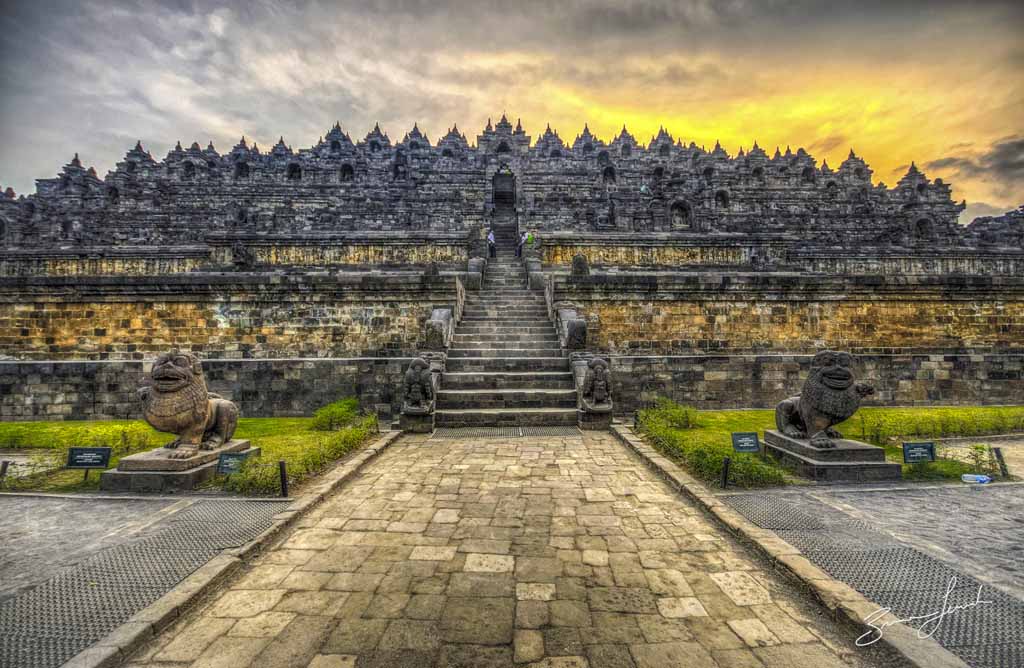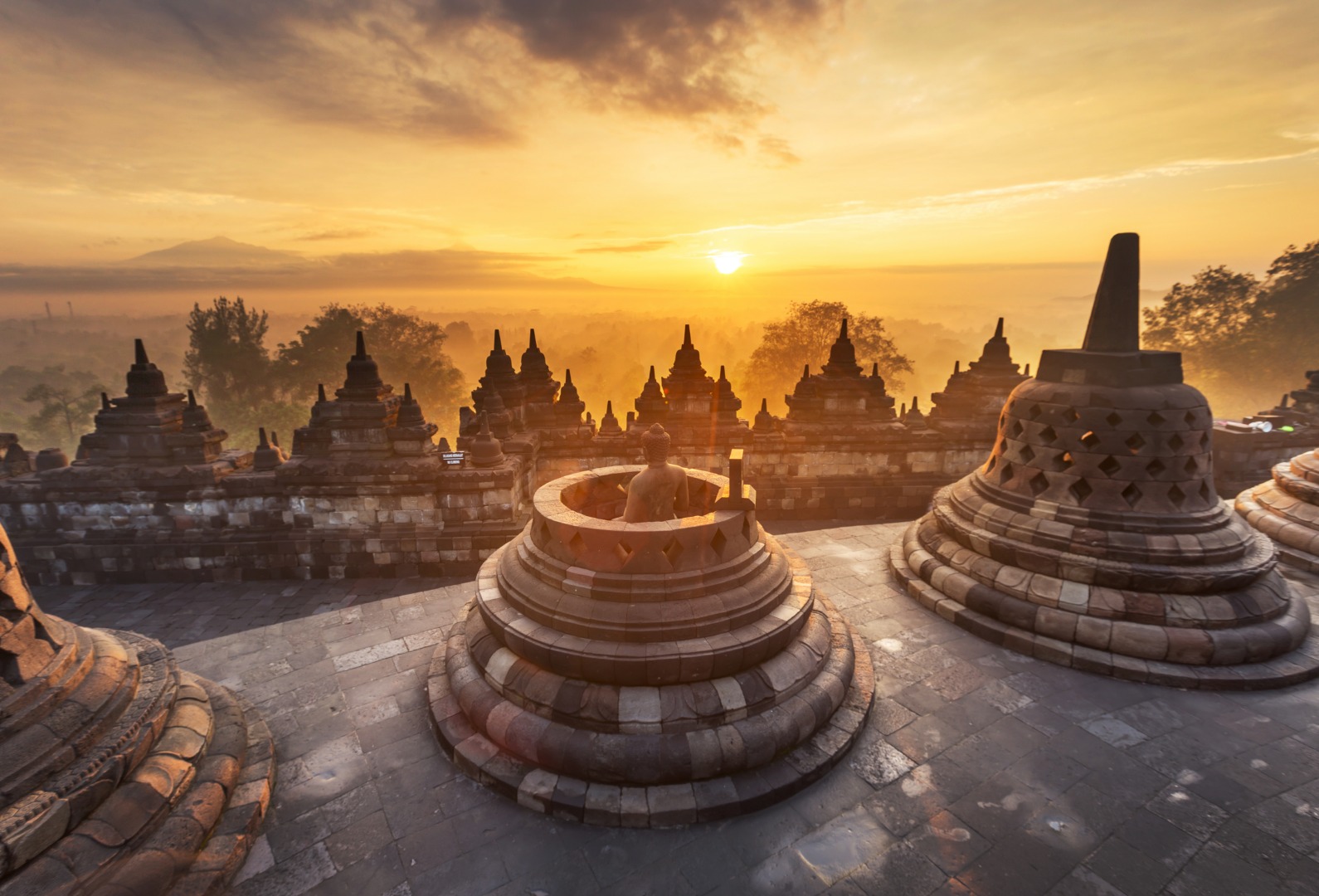Imagine a tapestry woven from mist, ancient stone, and the first golden threads of dawn. Picture a landscape where the air hums with centuries of spiritual devotion, and every angle offers a masterpiece waiting to be captured. This isn’t just a dream; it’s the profound reality of Borobudur, a magnificent Buddhist temple complex nestled amidst the lush volcanic plains of Central Java, Indonesia. For those with a passion for both travel and the lens, embarking on Borobudur temple photography tours isn’t merely a trip; it’s an pilgrimage to one of the world’s most breathtaking UNESCO World Heritage sites, promising images that transcend mere snapshots and become treasured visual stories.
Introduction: The Timeless Allure of Borobudur
Stepping onto the terraced platforms of Borobudur is like journeying back in time. This colossal structure, built in the 9th century, rises majestically from the earth, a symphony of carved stone depicting the path to enlightenment. Its sheer scale and intricate detail are astounding, leaving even the most seasoned traveler in awe. But beyond its historical grandeur, Borobudur offers an unparalleled photographic playground. From the ethereal pre-dawn glow to the vibrant hues of sunset, the temple constantly transforms, presenting endless opportunities to capture its spiritual essence and architectural brilliance. Are you ready to discover the secrets to immortalizing this ancient wonder through your camera?
Highlights: A Symphony in Stone and Light
The magic of Borobudur lies in its intricate details and the sublime atmosphere it cultivates. As you ascend its nine levels, you’ll encounter thousands of bas-reliefs telling tales of Buddhist cosmology and the life of the Buddha, each a potential frame for your camera.

- Architectural Grandeur: The temple’s unique mandala-shaped design is a visual feast. The lower levels feature square terraces adorned with narrative panels, while the upper three circular platforms are home to 72 bell-shaped stupas, each housing a serene Buddha statue. The interplay of these geometric forms against the natural backdrop of distant volcanoes like Mount Merapi and Mount Sumbing is simply breathtaking.
- The Golden Hour: Without a doubt, the most sought-after photographic moment is sunrise. Witnessing the temple emerge from the morning mist, bathed in soft, golden light, is an experience that touches the soul. The silhouettes of the stupas, the vibrant sky, and the gentle sounds of nature create an almost surreal ambiance. Sunset offers a different, equally dramatic spectacle, painting the sky with fiery oranges and purples as the temple settles into twilight.
- Spiritual Resonance: Beyond the visuals, Borobudur emanates a profound sense of peace and spirituality. The expressions on the Buddha statues, the silent reverence of fellow visitors, and the sheer antiquity of the place infuse every corner with a contemplative energy. Capturing this feeling, perhaps through candid shots of people meditating or the subtle textures of weathered stone, adds immense depth to your photography.
Activities: Beyond the Lens
While photography might be your primary focus, Borobudur offers a rich tapestry of experiences that enhance your visit.
- Guided Photography Tours: For serious photographers, joining a specialized Borobudur temple photography tour is highly recommended. These tours often provide early access to the temple before general opening hours, ensuring prime spots for sunrise shots without the crowds. Expert guides can also point out the best angles, lighting conditions, and even share historical insights that enrich your visual narrative. They might even offer tips on equipment, from wide-angle lenses for panoramic shots to telephoto for capturing distant volcanoes or intricate details.
- Exploring the Temple Grounds: Don’t rush your visit. Take time to walk around each level, absorbing the narratives of the bas-reliefs. Notice how the light changes throughout the day, revealing new textures and shadows. A slow, deliberate pace allows for more thoughtful compositions.
- Cultural Immersion: The area around Borobudur is alive with local culture. Visit nearby villages to witness traditional batik making, pottery, or shadow puppet craftsmanship. Engaging with the local community offers unique photo opportunities and a deeper understanding of Javanese life. You might even stumble upon a traditional dance performance or a local market bustling with activity.
Travel Tips for the Aspiring Borobudur Photographer
To make your photographic journey as smooth and rewarding as possible, keep these practical tips in mind:
- Best Time to Visit: The dry season (May to September) offers the most reliable weather with clear skies, ideal for sunrise and sunset photography. As mentioned, early morning (pre-dawn) is paramount for capturing the iconic Borobudur sunrise. Arriving well before sunrise (around 4:00-4:30 AM) is crucial to secure a good spot.
- How to Get There: The closest major airport is Yogyakarta International Airport (YIA). From Yogyakarta, Borobudur is about a 1.5-hour drive. You can hire a private car with a driver, take a taxi, or use ride-sharing apps. Many hotels in Yogyakarta also offer shuttle services or arrange tours.
- Entrance Fees: As of my last update, foreign visitor fees typically range around IDR 450,000-500,000 (approx. $30-35 USD) for regular entry. For the sunrise experience (often through the Manohara Hotel or specific tour operators), the fee is higher, but it includes early access and sometimes a light breakfast. Always check the latest official prices before your visit, as they can change.
- What to Bring:
- Camera Gear: A sturdy tripod is essential for low-light sunrise shots. Bring a wide-angle lens for grand landscapes and a telephoto for details. Spare batteries are a must!
- Clothing: Dress modestly (shoulders and knees covered) out of respect for the temple. Comfortable walking shoes are vital for climbing the many steps.
- Essentials: Hat, sunglasses, sunscreen, insect repellent, and plenty of water are advisable, especially during the day.
![Borobudur temple photography tours Borobudur temple photography tours]()
- Nearby Attractions: Extend your cultural exploration by visiting the smaller yet equally significant Mendut and Pawon Temples, both part of the Borobudur complex and aligned on a straight axis. For a different kind of adventure, consider a jeep tour around the base of the active Mount Merapi, offering dramatic volcanic landscapes.
- Local Food & Souvenirs: Don’t leave without sampling some local Javanese delights. Try "Nasi Gudeg" (jackfruit stew with rice), "Bakpia Pathok" (sweet mung bean pastry), or "Wedang Ronde" (ginger drink with glutinous rice balls). For souvenirs, look for intricate batik fabrics, traditional wooden carvings, or miniature Borobudur replicas crafted from stone. These not only serve as mementos but also support local artisans.
Conclusion: Your Photographic Legacy Awaits
Borobudur is more than just an ancient monument; it’s a living testament to human ingenuity and spiritual aspiration. For the travel photographer, it’s a canvas of infinite possibility, a place where every click of the shutter captures a piece of history, a moment of profound beauty, and perhaps, a flicker of enlightenment. So, pack your bags, charge your batteries, and prepare to embark on a journey that will not only fill your memory card with stunning images but also enrich your soul. Your next great photographic adventure, steeped in history and bathed in ethereal light, is waiting for you at Borobudur. Isn’t it time to answer its call?


